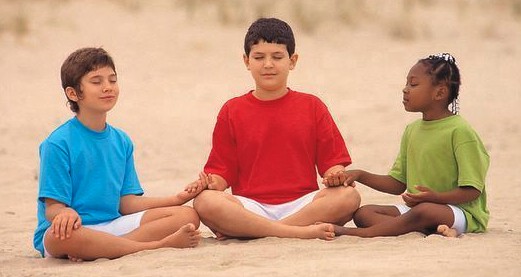
This pose goes by many names. Sometimes we call it Acorn. Most call it Child’s Pose, because babies often sleep this way.
Begin in Heel Sitting Pose. Open your knees a little, so your belly relaxes between your thighs. Bend at the hips and fold forward, letting your shoulders drop down, away from your ears and spine.
Your arms lay back along the sides of your legs, with open palms facing upward. Please your forehead on the floor, or turn it to one side for a while and then to the other side to gently stretch your neck. Take at least five breaths on each side.
Extended Child’s Pose
This time, lengthen your arms forward in front of you, with palms facing downward. This pose “extends” the spine, shoulders, arms, and fingers. You can stay in either version of Child’s Pose for as long as you want to.
Awesome Anatomy
Can you feel your ribs separating and moving as you breathe? Your intercostal muscles are at work. We call this “breathing into your back.”
Quiet Quests
Imagine a giant zipperfrom your neck to your tailbone. Use your breath to unzip it slowly from top to bottom. As it unzips, feel both sides of your back melt away from your spine. Breathe into your back. Let your back soften from your breath so it feels boneless.
Ecological Echoes
Animals without backbones are called invertebrates. Some examples of invertebrates are worms and jellyfish. This pose could be renamed “Jellyfish Pose”!



 Instructions
Instructions



 You are hot, filled with power and electricity. Sizzling! Pass it on by holding hands with your friends. Can you feel the electricity flowing through your body and between you and your companions? ZZZZAP!
You are hot, filled with power and electricity. Sizzling! Pass it on by holding hands with your friends. Can you feel the electricity flowing through your body and between you and your companions? ZZZZAP!
